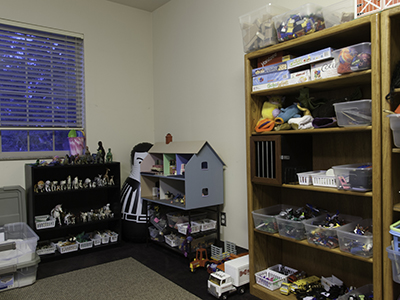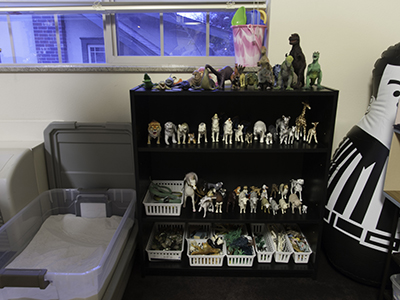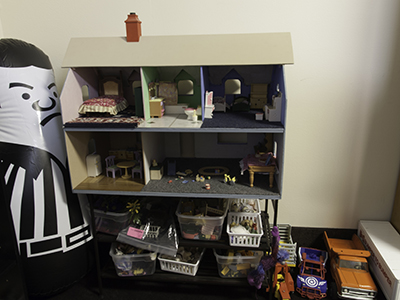Play Therapy
What Is Play Therapy?
Non-directive play therapy is an experiential approach used with children to help them process small or large traumatic events that have been part of their life experience. Although children can talk as adults do, they do not process on the same cognitive level as adults. Instead, children process through their play experiences, which is why play therapy is effective for children.
Through the use of play and metaphor, children can re-create their traumatic experiences in the play room with the therapist and work through their experiences to heal their trauma and pain. Children often move from a place of helplessness and fear to a place of empowerment and safety during their time in therapy.
Children will play out certain themes in the playroom, depending on what they are struggling with at the time. Common themes include: safety and protection, anger or aggression, grief and loss, self-esteem, as well as nurturing and regression. Children have an innate ability to know what they need to work on in the play room, so the therapy is directed and led by the child.
Who Is Appropriate For Play Therapy?
Play therapy is an effective approach for children who have the ability to use symbolic play. This is typically acquired between 20 and 36 months of life. As children reach the age of 10, they may start transitioning from play therapy to more directive talking activities. However, this can be very dependent on their emotional age as well.
Play therapy is most helpful for children who are reacting to the stress of a particular life event, and not as helpful for children who have an organic disorder, such as mental retardation, autism, asperger’s disorder, and ADHD.
Are Parents Invited Into Play Therapy Sessions?
Most play therapy sessions are conducted with only the child and the therapist. However, there are some circumstances in which the parent would be invited into the play therapy sessions. These would include if the child needed the parent there for support or if the goal of therapy was to strengthen the relationship between the child and the parent. Otherwise, parents will be asked to wait outside of the therapist’s office during the session. Parents are welcome to check-in with the therapist by phone or before/after the session occurs.




